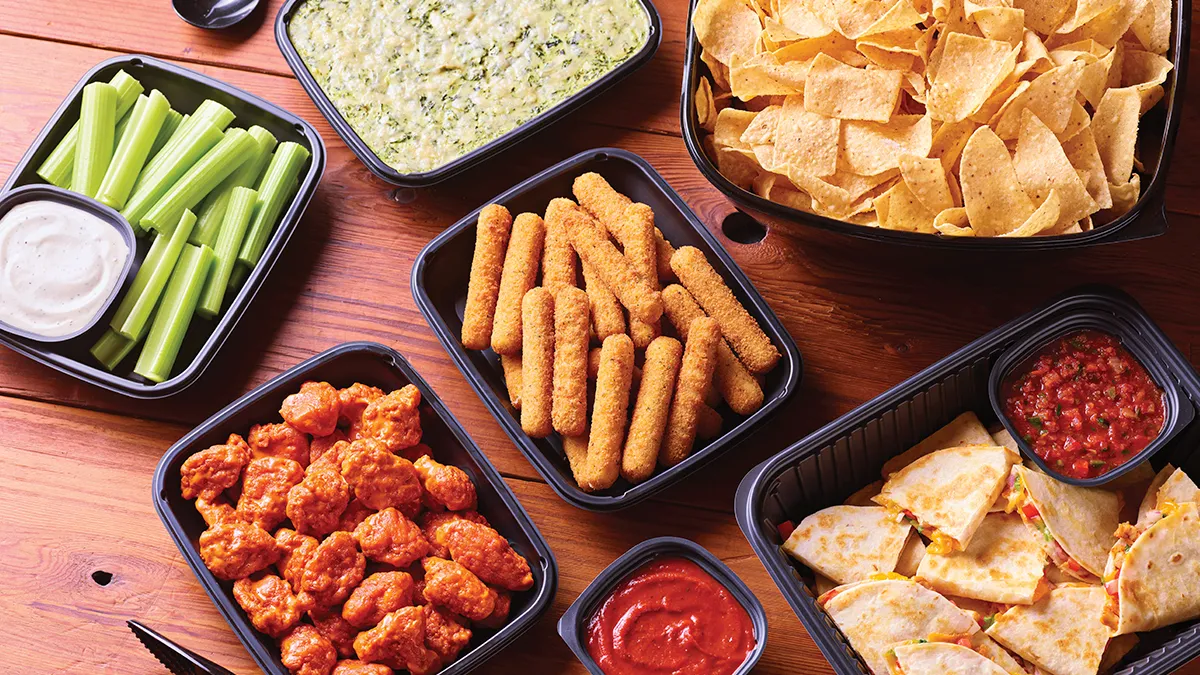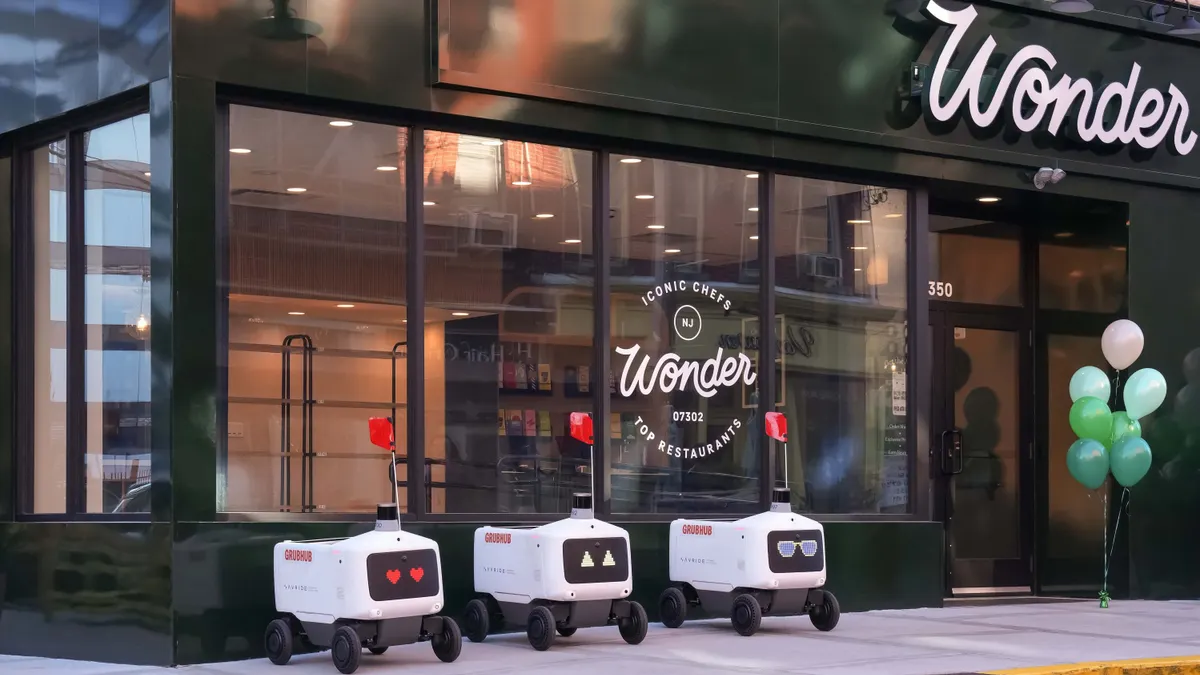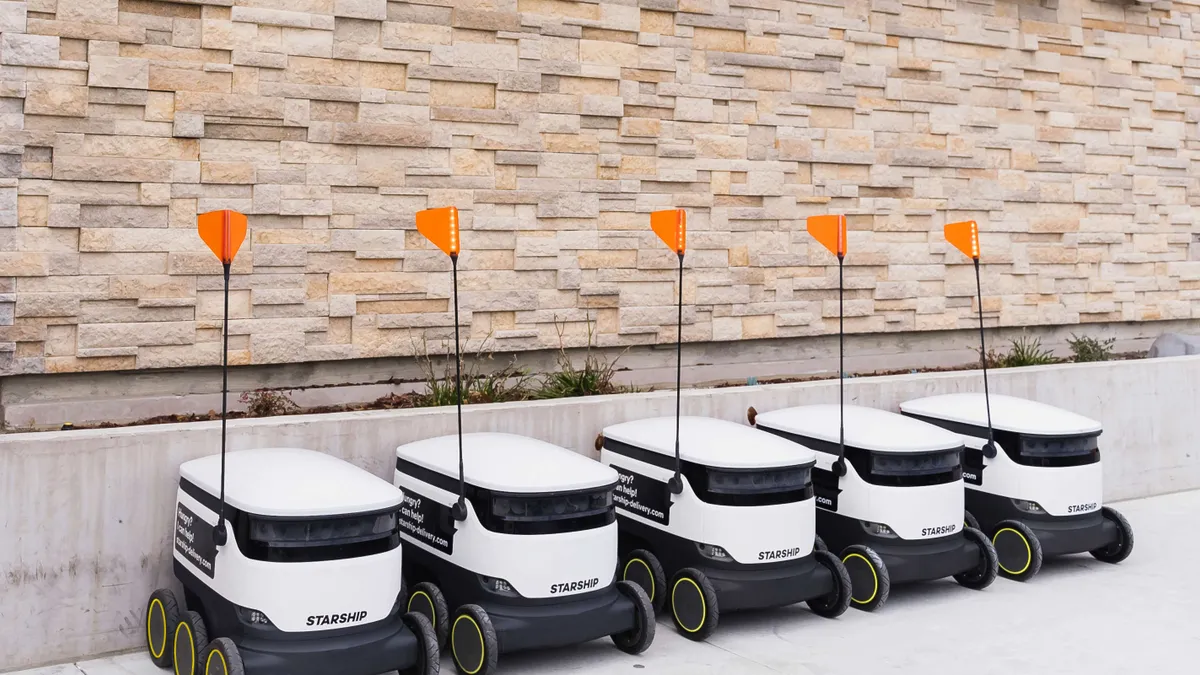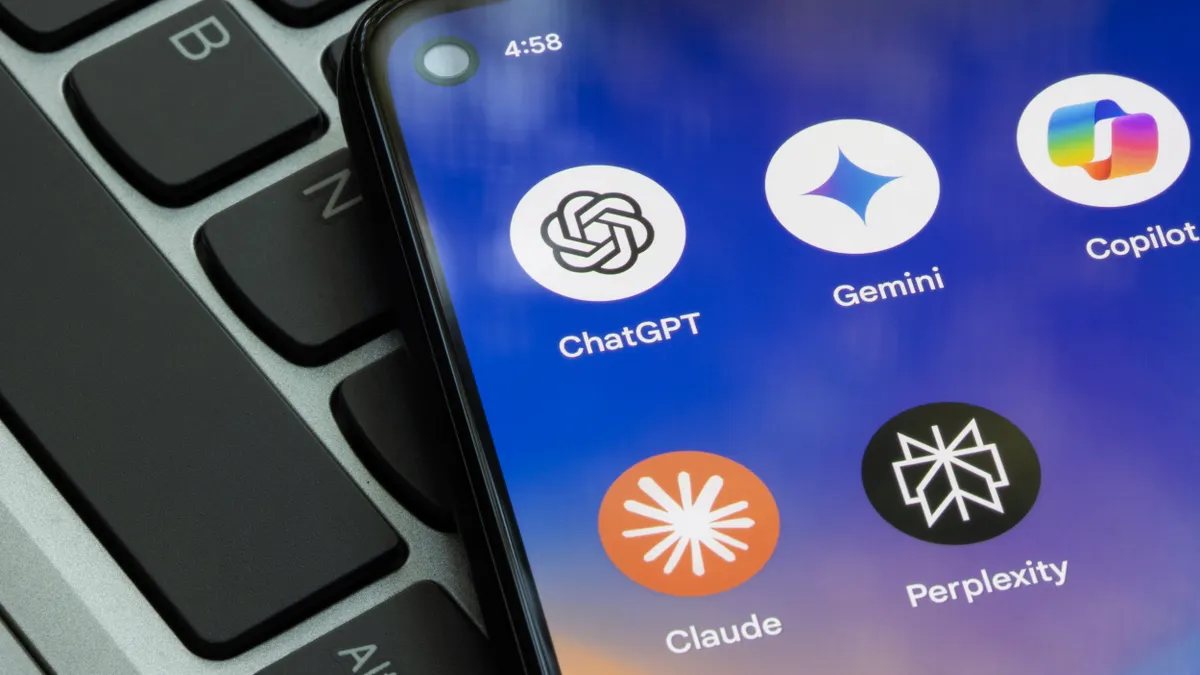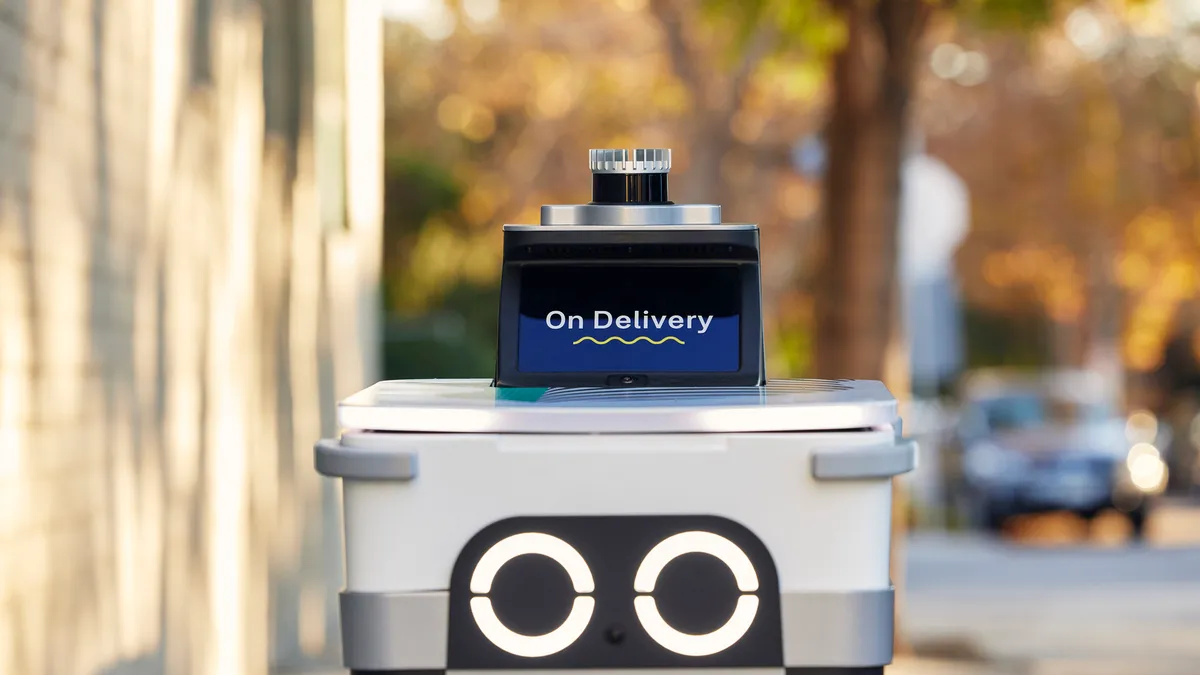Last year, casual restaurant chains from Bloomin' Brands to Red Robin struggled with the same challenge: declining traffic. Average checks grew in the single-digits while guest counts dropped. Dine Brands too saw this trend at IHOP and Applebee's, and has implemented a strategy to try and temper a trend that’s been 10 years in the making, CEO Steve Joyce told Restaurant Dive.
At the same time, the industry has been raising menu prices, but potentially to its detriment. According to the National Restaurant Association’s State of the Industry 2020 report, menu prices have risen between 1% and 3% since 2010 while the cost of groceries grew at a slower pace, even declining in 2016 and 2017, creating a less compelling reason to dine out.
There is a group of customers that are very value conscious and influenced by these pricing changes, Joyce said. Men, especially those between 24 and 35 with families, in particular, fall into this category, according to Restaurant Business. This demographic has experienced the most traffic decline over the last three years while visits from women have held steady. The proliferation of prepared meals at grocery stores has made capturing these diners even more challenging, according to Restaurant Business.
Dine Brands has been managing costs to lure diners back without negatively impacting franchisee profitability, Joyce said.
To strike this balance, the restaurant company is investing in growing its catering channels, entering more urban markets, expanding into nontraditional locations and offering value-based LTOs. It also created branded delivery channels on its websites to drive diners back to its restaurants.
1. Catering
2020 will be a foundational year in catering for Dine Brands as awareness for the option grows, John Cywinski, president of Applebee's told investors during its year-end earnings call on Monday. The company also predicts that 2021 will be a significant activation year for the channel with more consumers using the option for off-premise.
"Could it be a 5% sales layer? Without question, when you benchmark other brands who have been in this business for a long time. But it does take some time to establish a database, and it does take some time to establish credibility in this arena, both of which we'll be working hard against this year," Cywinski said.
Catering for private events and family occasions will be the easiest opportunity to take advantage of because it requires less marketing since consumers are often already aware of the restaurants’ menus and variety. The channel works for multiple occasions, Joyce told Restaurant Dive. Families wanting to do a brunch at home can order from IHOP, whereas Applebee's can offer a cookout of ribs and burgers for other dayparts.
Business catering will take longer to establish because it requires more aggressive sales tactics, he said.
"You have to develop a relationship with the folks doing the ordering, let them know what you’ve got, bring up samples of it so they know how good it is and get on their roster and start proving … that you are the go-to place for catering," Joyce said.
Franchisees will likely have a team member focused on catering part-time who will then become full-time as the catering program grows, he said.
"Eventually in order to be successful if you want to drive 5% of your business or 10% of your business to be catering, you’re going to have to have catering folks knocking on your doors," he said.
Joyce said he anticipates Applebee's franchisees to have more success initially with business catering since it partners with only 31 franchisee companies, many of which are large and have the resources to invest in a catering program immediately.
For IHOP, which has 300 different franchisee partners, it will involve more education since many may not have the catering experience or knowledge, he said. IHOP is initially focusing on getting franchisees situated to make sure their operational chops are up to par and catering processes are established, Jay Johns, IHOP president, said during the earnings call.
2. Delivery
Making delivery work not just for customers, but also franchisees was part of the company’s delivery strategy last year, which included offering branded delivery through IHOP's and Applebee's websites and apps.
Because of Applebee's and IHOP’s distribution and proximity of delivery options, Joyce told Restaurant Dive that he expects Applebee’s and IHOP to be strong delivery players. Last year, the company worked with its delivery partners so that customers are paying for the cost of delivery and franchisees aren’t, Joyce said.
"Our franchisees who were originally reluctant in some ways on delivery in part because of the profitability are now fully in," Joyce said.
That includes one of its largest Applebee's franchisees, Flynn Restaurant Group, which was testing removing delivery at its restaurants last year.
"That was part of the motivation … that allowed us to go have a sit down with delivery companies … and come up with an agreement that franchisees are happy with and what the delivery companies can live with," he said.
3. Expanding in urban markets
With the launch of Flip'd by IHOP slated for April, Dine Brands will deploy a new IHOP product that can be used in more urban markets to appeal to a new customer base, especially millennials and Gen-Z diners seeking on-the-go concepts.
"We are significantly under-penetrated in urban markets because of the [high] cost of doing more traditional development," Joyce said, adding that in Manhattan, for example, there are only two IHOPs.
But for those Applebee's and IHOPs that do exist in cities, the performance has been exceptional, he said.
"[Flip'd] will give us presence and we think this will drive considerable revenues and considerable profitability and the buildings themselves are relatively inexpensive to construct," he said.
The fast casual concept is inspired by IHOP menu items, but is modified for the faster service model. For example, if a guest likes the poblano omelette at IHOP, they can get it as scrambled eggs with poblano sauces and spices mixed in, Joyce said. The concept will be more heavily weighted toward delivery and carryout and have about a dozen seats. Compared to IHOP, Flip'd will have a bakery and heavier emphasis on specialty coffee, Joyce said.
Another way that Dine Brands will enter urban markets is through ghost kitchens. The company is considering joining with existing platforms that offer shared kitchen spaces and developing its own ghost kitchen, Joyce said. It plans to develop its own ghost kitchen concept in a major Midwest city where it does not have representation of its brands, he said.
"We're going to see how that works both in 'can we generate enough interest' and then 'can we create enough business in delivery' to make it profitable," he said.
4. Alternative locations
In late 2019, IHOP partnered with Travel Centers of America for 94 units to be built within the next five years, marking its largest franchise deal ever. So far with the handful of units now up and running, the results have been positive, Joyce said. The company plans to ramp up development to 15 this year.
"We also see other opportunities like this in nontraditional [locations]," he said. "We are already in discussion with other folks that are roadside facilities."
The company is also in discussions with Indian gaming casinos run where it could add 24-hour IHOPs, he said.
5. Highlighting value through LTOs
Much of these strategies won't work without a compelling price point and focusing in on value, which is a key area for both Applebee's and IHOP. That means offering attractive LTOs alongside a balanced menu with a variety of prices so that even when value pricing is emphasized, it doesn’t impact franchisee profitability.
With Applebee's gearing up for expansion after the restaurant closed properties that didn’t work for the system or weren’t profitable, LTOs could be particularly compelling to get diners to come back.
"We’re in this mode of executing well against a really strong plan for the entire year of various innovations in terms of food that will bring people back coupled with aggressive pricing and abundant value," Joyce told Restaurant Dive.
Applebee's offered solid deals over the last few months, including its $7.99 bowls and an all-you-can eat offering with three proteins that were well received and some of the brand’s strongest programs, Joyce said. It also offers a monthly drink promotion of a cocktail for $1.
IHOP too benefited from promotions that highlighted value, including the partnerships with the Elf on the Shelf and the The Addams Family animated feature, Johns said during the company's earnings call on Monday.
So far this year, IHOP brought back its all-you-can-eat pancakes that can be paired with any breakfast offering and introduced a weekday 2x2x2 to offer two eggs, two pancakes, and a choice of two sausage links or two bacon strips for $4.99, Johns said. This offering is part of the company’s strategy to increase traffic during the week to balance its strong traffic during the weekends, Johns said.
"We know now if we keep value customers in the fold … we're going to not only take share but also grow both traffic in the restaurant and think we’ll still have double-digit growth for off-premise for both [brands]," Joyce said. "We're very happy with where we are. It is a take share business and so we have hit on a formula that we know when we execute, it works."


